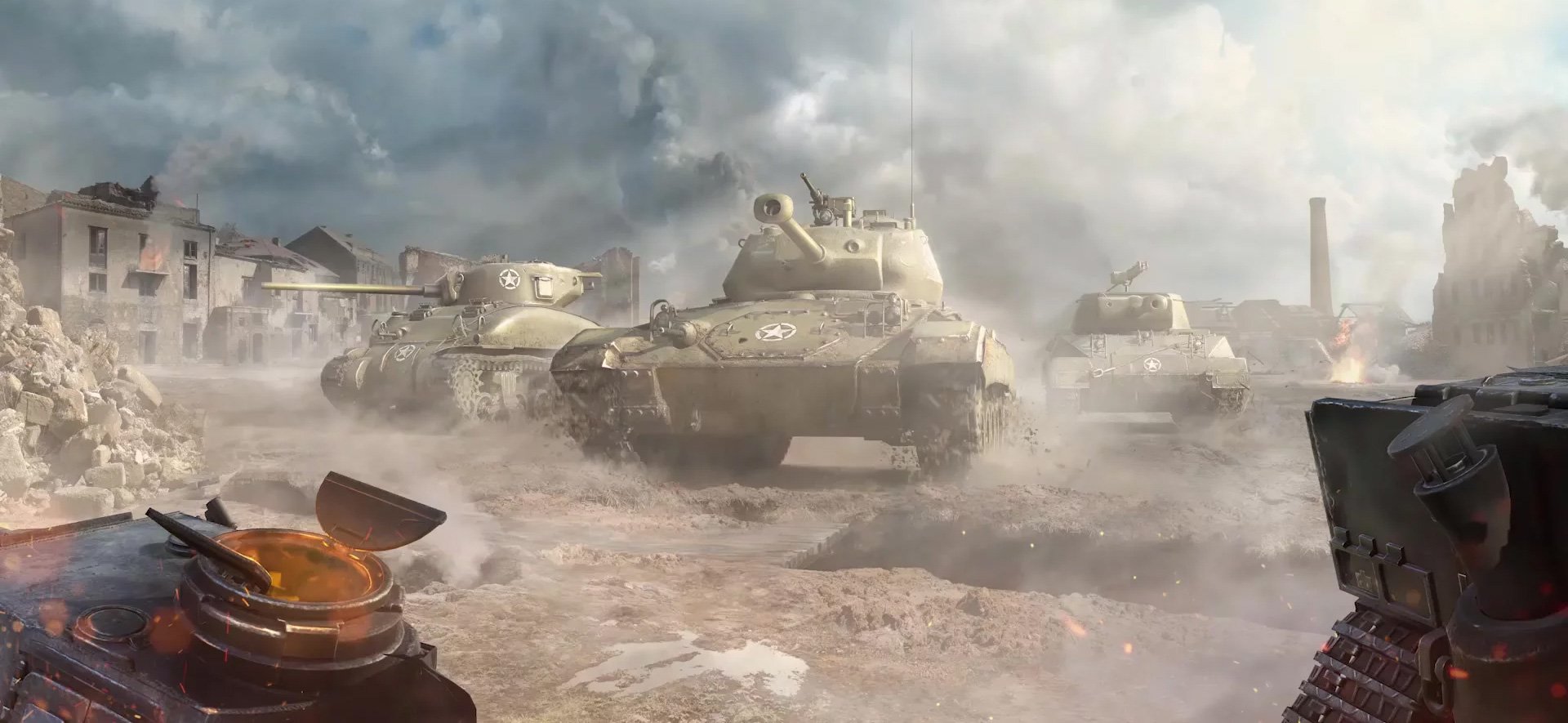Certain World War II vehicles come equipped with an exciting battle mechanic inspired by a real-life historical weapon: flamethrowers!
Click below to be taken to a specific topic, or simply read on to learn more:
Part 1: Flamethrower Basics
The first and most important thing to know is that there are two types of vehicles that use flamethrowers in World of Tanks Modern Armor:
- Tanks that shoot flames as a special type of ammo that’s launched from the same barrel as normal shells
- Tanks that have a separate flamethrower mounted as a secondary weapon; these are Multiple Weapon System vehicles
For both types of tank, the flame “fuel” is set up in clips, like ammo clips, to prevent you from unloading all of it in one stream. The size of the clip will vary from vehicle to vehicle.
Both types of flamethrower use a new kind of shell, called Flame, that acts similar to HE (High Explosive) ammo. Flame shells have their own ammo icon and a special reticle in your HUD that’s active when you have Flame loaded as your current ammo:
| Flame Shell Ammo Icon | Flame Shell HUD Reticle |
|---|---|
|
|
|
Flamethrowers are short- to mid-range weapons, with the flames capable of reaching targets 90 to 300 meters in front of your gun, depending on the tank.
Flames deal small but ongoing amounts of damage. The longer you hose an enemy tank with fire, the longer the fire will burn. And unlike with regular shells, you can torch multiple enemies with a single-clip burst of fire from your flamethrower.
All of this might seem straightforward, but the differences between flames and standard ammo are in the details.
The flamethrower module deals damage via a special mechanic, External Fire, which is a different status effect from the fires that existed prior to the addition of flamethrowers. External Fires also damage open-top and closed-top tanks differently.
Let’s dive further into those details!
Part 2: External Fires and Closed-Top vs. Open-Top Tanks
Prior to the introduction of flamethrowers, the only fire mechanic in the game was known as Engine Fire.
With flamethrowers now in the game, the existing Engine Fire mechanic was renamed Internal Fire. No other changes were made to how this system works, but it was important to create a distinction between Internal Fire and the new External Fire.
External Fire is what happens when a tank is hit with a flamethrower’s Flame shell. Unlike the Internal Fires that can deal massive damage over time and crippling debuff effects to a tank's modules and crew, an External Fire will do less damage to hit points and is less devastating to modules or crew.
When your tank is set ablaze by an External Fire from a flamethrower, your tank status display (lower left on your HUD) will display the External Fire warning icon:
Here are some general notes to keep in mind about External Fires:
- A tank set on fire by an External Fire is 15% more visible and is therefore easier to spot.
- Each hit from the flamethrower adds 0.2 seconds of burn time. The maximum duration of flame on a tank is 8 seconds.
- It is possible to receive an Internal Fire from an External Fire, but the probability is low.
- Environment:
- Damage against buildings and environments will be treated the same as a regular shot.
- New "burn" decals have been created for areas on the map or objects hit by the flame.
And as we mentioned, External Fires will affect closed-top and open-top tanks differently. What does that mean?
Many of the game’s tanks—its light, medium, and heavy tanks—are tanks with turrets. This gives them closed tops that are sealed off and protected from their environments. Closed-top tanks therefore suffer less damage from flamethrowers… but they can still be harmed!
However, some vehicles like tank destroyers and especially artillery don’t have turrets. These open-top vehicles are more susceptible to the damage that flamethrowers and External Fires can do.
Here’s a comparison of the effects External Fire has on closed-top and open-top tanks:
| For closed-top tanks: | For open-top tanks: |
|---|---|
|
|
If your flamethrower tank is able to get close enough, all of this will make it a great anti-SPG and anti-TD tank!
Part 3: Consumables
With the introduction of flamethrowers, fire-suppressing Consumables received updated functionality to include External Fires. These updates include an increased passive boost and new functionality that prevents your vehicle from catching on fire for 10 seconds after use.
| Fire Suppressor | Enhanced Fire Suppressor |
|---|---|
|
Active Use:
Passive Boost: -20% chance of Internal Fire |
Active Use:
Passive Boost: -25% chance of Internal Fire |
After using a fire-suppressing Consumable, the following icon will appear to indicate that your tank cannot be set on fire. This icon will disappear once the fire protection time expires.
| Fire Suppressor | Enhanced Fire Suppressor |
|---|---|
 |
 |
Part 4: Additional Updates
- Commander Skill - Fire Prevention:
- We updated the Skill’s description. It now reads: 33% decrease to chance of Internal Fire.
- Detailed Stats Page:
- We changed the text for "fire chance" to "Internal Fire chance."
Part 5: List of Flamethrower Tanks
Of course you want to know which World War II vehicles have flamethrowers. The current list is below!
| Flames Fired from the Same Barrel as Regular Shells: | Secondary Weapon Flamethrowers: |
|---|---|
